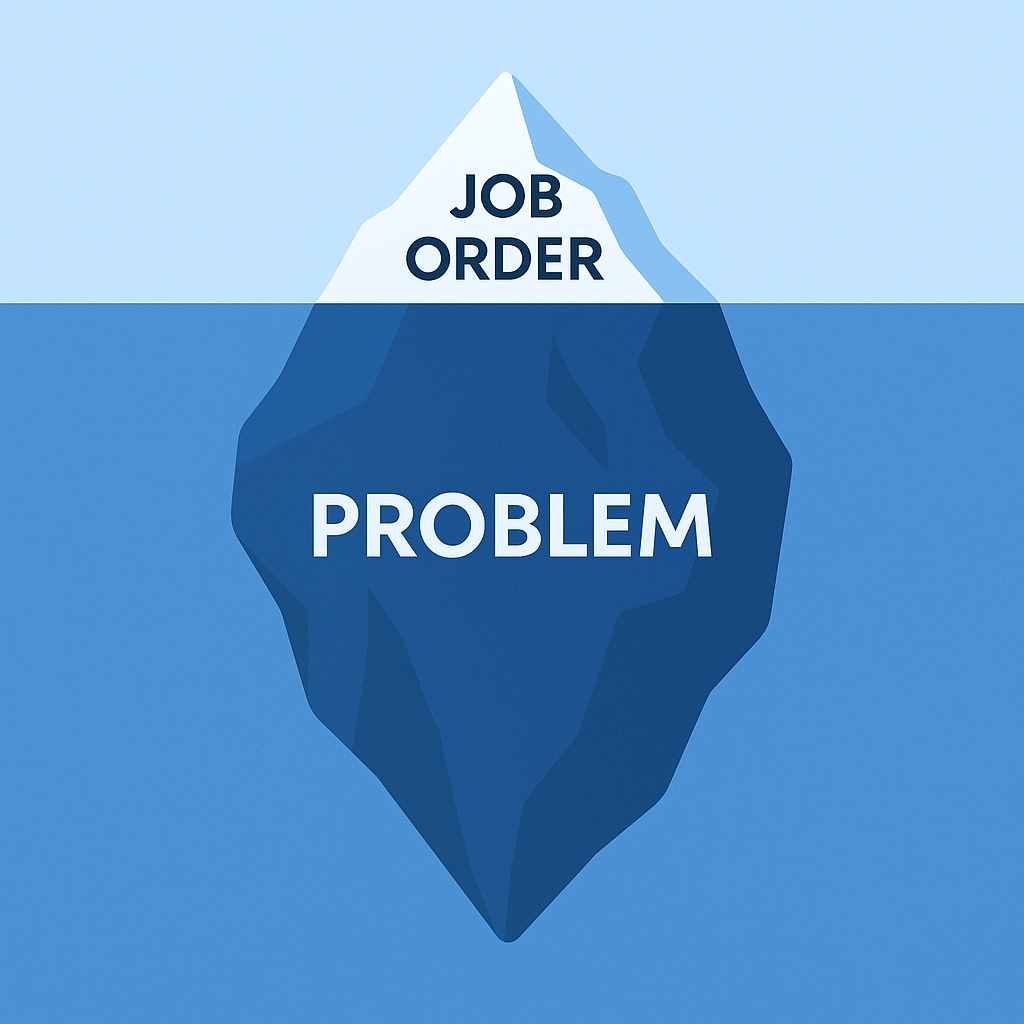Selling With Your Consultant
In my previous post, How to Prevent Unexpected Contract Terminations, I shared how systemizing consultant and client check-ins at key milestones...

Adopting a consultative sales approach is paramount for today's IT staffing sales professional. Gallup Group reports less than half of customers believe sellers adequately address their problems. This problem stems from the sellers misunderstanding of the buyer persona and misalignment with the stage of buyer's journey. Salespeople need to master consultative selling in order to differentiate from the competition and build customer value into the sales process. This is where a consultative sales approach comes in.
Below are four consultative sales strategies for 2019. 
Consultative selling represents a sales approach in which sellers disengage from pitching products, services or their candidates and instead focus on sequencing strategic probing questions to engage in dialogue in which the customer reveals their goals and objectives and the challenges that lie in their way.
Consultative selling also includes insight selling and sharing best practices with prospects on how to go about solving a problem or achieving a goal. By sharing ideas and insights the salesperson positions him or herself as an authoritative thought leader. With this approach sellers are able to challenge the customer's thinking, thought process, assumptions and beliefs and by doing so, effectively shape the solution. This is how consultative sellers create value and build trust with the customer.
Research the Customer
The real key to engaging in consultative sales dialogue and getting good management level meetings starts with good situational and functional knowledge of the customer's business. This knowledge is developed through personal experience, training, reading, research and planning. By first  understanding what the customer is trying to achieve and problems they're trying to solve, the salesperson can properly frame the conversation, wrap their expertise around inquisitive questions to gain a deeper understanding of the customer's needs, and intelligently position their solution as the smartest and least risky choice. Without proper planning and research however, salespeople make their offering and self-serving agenda the focal point of the conversation.
understanding what the customer is trying to achieve and problems they're trying to solve, the salesperson can properly frame the conversation, wrap their expertise around inquisitive questions to gain a deeper understanding of the customer's needs, and intelligently position their solution as the smartest and least risky choice. Without proper planning and research however, salespeople make their offering and self-serving agenda the focal point of the conversation.
Balance Questions With Insights
Following research, the path to making a sale begins with inquisitive discovery questions to understand the customer’s needs. Developing open-ended, thought provoking discovery questions is critical to successfully executing this important step.
“From the customer’s point of view, the greatest need for improvement is in salespeople’s knowledge of the customer’s business and industry,” reports Harvard Business Review, after interviewing more than 300 professionals. Too often, sellers position solutions that aren’t a fit for the customer.
However, asking questions in a way in which the customer doesn't feel like they’re being interrogated is a skill. One approach and skill is to intersperse ideas, insights and relevant data points and best practices with your questions to create an even balance to the conversation. When salespeople share ideas and insights they build credibility and trust with the customer which earns them the right to ask more questions and gather more information. Sellers who only ask questions and fail to share insights and ideas tend to receive limited responses to their questions. Finally, sharing ideas and insights keeps the customer engaged.
Too often salespeople take the approach of "let's just see where the conversation goes" when they get in front of customers (or on the phone). Even worse, many sales professionals rely on the customer to drive the conversation, either due to lack of training or lack of preparation or both. Remember, consultative selling is all about the quality of the dialogue and the experience the salesperson creates for the customer. To create an engaging and memorable customer experience, the salesperson needs to own and drive the conversation.
Think about a patient going into surgery. The patient doesn't tell the doctor how they want them to perform the surgery. The patient expects the doctor to tell them what is going to happen before, during and after the surgery. The patient expects the doctor to educate them on the process and set expectations for what will happen after surgery. The patient is looking to the doctor for their support and encouragement. This of course is what any good doctor does, they instill confidence and hope in their patients.
The same is true with sales and how buyers expect to engage salespeople. The customer needs to know and believe they’re speaking with someone who can guide them through the complexities of their business challenges and options for solutions. Sellers can't accomplish this by simply "riding shotgun." Taking ownership and driving the conversation demonstrates credibility and builds trust. Not only that, by taking control of the conversation the seller can effectively shape the customer's perceptions of themselves. But driving the conversation doesn't mean dominating the conversation. Salespeople must also be comfortable with asking questions and going silent to emphasize key points and allowing the customer to share their thoughts and feelings.
Trust me when I say, bad feedback is WAY better than no feedback. Every, and I mean every salesperson wants and needs to know where they stand with their prospects and customers. There’s no such thing as bad feedback. Even the harshest customer objections offer invaluable benefits for salespeople. When a customer articulates a concern or disagreement, they’re simply clarifying their needs and indicating what they need to see in order to move forward. Having said that, it is critically important that the salesperson carefully consider every piece of customer feedback. One thing I have learned over the years is I no longer write proposals independently, without customer input. When it comes time to write a proposal, the customer plays an active role in the process. Why? This affords me and the customer the opportunity for ensuring we are in alignment and it also gives the customer the opportunity to share with me their concerns each step along the way. Just as importantly, it gives me the opportunity to discuss with the customer potential solutions to their concerns. Without including the customer in the process I would have a LOT of declined proposals and customers who go MIA.
Be sure to take notes, lots of notes and don’t be afraid to check with the customer for feedback after you have offered a solution or a rebuttal to their concern. Be sure to ask the customer for their perspective and perception of what it is you are offering. This will keep the buyer engaged and demonstrates the seller’s commitment to a collaborative, consultative process. Often times gaining feedback affords salespeople the opportunity to expand the solution or up-sell the opportunity.
Adopting a consultative selling framework helps sellers apply a consistent methodology to ever-changing buyer behavior, stay in alignment with their customers, accelerate the sales cycle and improve sales win rates. What consultative sales strategies will you implement for the upcoming year?

In my previous post, How to Prevent Unexpected Contract Terminations, I shared how systemizing consultant and client check-ins at key milestones...

About a year ago, I was serving as the fractional revenue leader, managing sales and recruiting for a client.

If you’ve worked in staffing long enough, you’ve been trained to chase job orders.